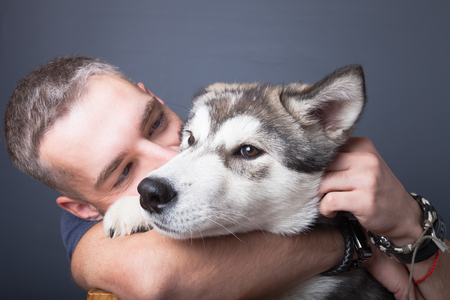1. Why Exercise Matters for Small Pets
Just like humans, small pets need regular exercise to stay healthy and happy. Whether you have a rabbit, guinea pig, hamster, or ferret, physical activity plays a crucial role in their overall well-being. Exercise helps prevent obesity, reduces stress, and keeps your furry friend mentally stimulated.
Preventing Obesity
Small pets are prone to weight gain if they don’t get enough movement. Obesity can lead to serious health issues such as diabetes, heart problems, and joint pain. Regular exercise helps maintain a healthy weight and promotes better digestion.
Signs of Obesity in Small Pets
| Pet Type | Signs of Obesity |
|---|---|
| Rabbits | Difficulty grooming, lethargy, trouble hopping |
| Guinea Pigs | Fat deposits around legs, reduced mobility |
| Hamsters | Round body shape, reluctance to move |
| Ferrets | Excess belly fat, sluggishness |
Reducing Stress and Anxiety
Lack of exercise can lead to boredom and stress in small pets. This may result in destructive behaviors such as chewing on cage bars or excessive grooming. Providing opportunities for play and movement helps release pent-up energy and keeps them emotionally balanced.
Promoting Overall Well-Being
Exercise is not just about physical health—it also supports mental stimulation. Small pets enjoy exploring new environments, solving puzzles, and engaging in activities that mimic their natural instincts. This enhances their cognitive function and prevents behavioral issues.
Ways to Encourage Exercise:
- Tunnels and Hideouts: Great for guinea pigs and rabbits to explore.
- Running Wheels: Essential for hamsters to stay active.
- Interactive Toys: Stimulate curiosity in ferrets and other small pets.
- Playtime Outside the Cage: Supervised time in a safe area allows for more movement.
Ensuring your small pet gets enough daily exercise will help them live a longer, healthier life. In the next section, we’ll explore different types of exercises tailored for specific small pets.
2. Types of Exercises for Different Small Pets
Keeping your small pet active is essential for their physical and mental well-being. Different pets have different exercise needs, so its important to find activities that suit their species and personality. Below are some great exercise options tailored to various small pets.
Rabbits
Rabbits are energetic animals that need plenty of space to hop, run, and explore. Providing them with a secure play area allows them to stretch their legs and stay fit.
Exercise Ideas for Rabbits
- Free Roaming: Let them explore a rabbit-proofed room or enclosed yard.
- Tunnels and Hideouts: Set up tunnels or boxes for them to run through.
- Toys: Offer balls, chew toys, or cardboard structures to keep them engaged.
Guinea Pigs
Guinea pigs may not be as fast as rabbits, but they still need daily exercise to stay healthy. A spacious enclosure and stimulating activities help keep them active.
Exercise Ideas for Guinea Pigs
- Floor Time: Allow them supervised time outside their cage in a safe area.
- Tunnels and Mazes: Create obstacle courses using tubes and ramps.
- Treat Hunts: Hide small treats around their play area to encourage movement.
Hamsters
Hamsters are nocturnal animals that love to run and explore, especially during the night. They require exercise options that cater to their natural instincts.
Exercise Ideas for Hamsters
- Exercise Wheel: Provide a solid-surface wheel to prevent injuries.
- Tubes and Climbing Structures: Encourage exploration with tunnels and ladders.
- Balls: Use an exercise ball for supervised roaming outside the cage.
Ferrets
Ferrets are highly energetic and playful animals that require lots of stimulation. They thrive on interactive playtime and physical activity.
Exercise Ideas for Ferrets
- Tunnel Systems: Set up long tunnels or tubes for burrowing fun.
- Puzzle Toys: Use treat-dispensing toys to engage their intelligence.
- Interactive Play: Play chase games or provide soft toys for tugging and tossing.
Comparison of Exercise Needs by Pet Type
| Pet Type | Main Exercise Methods | Recommended Daily Activity Time |
|---|---|---|
| Rabbits | Free roaming, tunnels, toys | At least 3-4 hours |
| Guinea Pigs | Floor time, tunnels, treat hunts | Around 1 hour |
| Hamsters | Wheel running, tubes, exercise balls | Around 30 minutes (mostly at night) |
| Ferrets | Tunnels, interactive play, puzzle toys | Around 4 hours (multiple sessions) |
No matter what kind of small pet you have, providing them with regular exercise helps prevent obesity, boredom, and health issues. By understanding their unique needs and preferences, you can ensure they stay happy and active every day!

3. Setting Up a Safe and Fun Exercise Environment
Creating a secure and engaging space for your small pet to exercise is essential for their physical and mental well-being. A well-designed environment encourages movement, exploration, and play while keeping them safe from potential hazards.
Choosing the Right Play Area
Designate a specific area in your home where your pet can safely explore. This could be a playpen, a sectioned-off room, or an enclosed space free from dangers like electrical cords, sharp objects, or toxic plants.
Essential Exercise Equipment
Providing various exercise tools can keep your small pet active and entertained. Here are some great options:
| Exercise Tool | Benefits |
|---|---|
| Playpens | Creates a controlled environment where pets can roam freely without risk. |
| Tunnels | Mimics natural burrowing behavior and provides mental stimulation. |
| Exercise Wheels | Allows pets like hamsters and rats to run safely without needing a large open space. |
| Interactive Toys | Keeps pets engaged with problem-solving activities and movement-based fun. |
Making the Space Safe
- Ensure there are no gaps where your pet could escape or get stuck.
- Avoid placing heavy objects that could tip over and injure them.
- Use non-toxic materials for toys and bedding to prevent accidental poisoning.
- Supervise playtime to monitor their safety and interaction with the environment.
Encouraging Exploration and Play
Rotate toys regularly to keep things interesting for your pet. Introducing new tunnels or rearranging their play area can stimulate curiosity and prevent boredom. Positive reinforcement, such as treats or gentle praise, can also encourage them to use their exercise equipment more often.
Final Tips for a Fun Exercise Space
- Keep the area clean by removing waste and soiled bedding frequently.
- Add soft surfaces like fleece liners to protect tiny feet from hard flooring.
- Provide hiding spots to make your pet feel secure while exploring.
- Observe their behavior to ensure they’re comfortable and enjoying their activities.
A well-planned exercise space helps your small pet stay active, happy, and healthy. By offering safe and engaging activities, you can enhance their quality of life while strengthening your bond with them.
4. How Much Exercise Does Your Small Pet Need?
Ensuring your small pet gets the right amount of exercise is essential for their physical and mental well-being. However, different types of small pets have varying activity needs. Providing too little exercise can lead to obesity and boredom, while too much can cause stress and exhaustion. Below, we break down the recommended daily exercise for different types of small pets.
Recommended Daily Exercise for Small Pets
| Pet Type | Recommended Daily Exercise |
|---|---|
| Rabbits | At least 3-4 hours of free-roaming time outside their enclosure in a safe space. |
| Guinea Pigs | 1-2 hours of supervised floor time with tunnels, toys, and hiding spots. |
| Hamsters | 30 minutes to 1 hour of playtime outside the cage, plus a running wheel inside their habitat. |
| Ferrets | At least 4 hours of supervised playtime outside their cage with interactive toys. |
| Chinchillas | 1-2 hours of active playtime outside the cage in a secure environment. |
Signs Your Pet Needs More or Less Exercise
Signs They Need More Activity:
- Pacing or excessive chewing on cage bars
- Weight gain or signs of lethargy
- Destructive behavior due to boredom
Signs They May Be Overexercised:
- Panting or excessive fatigue after playtime
- Avoiding activity or hiding more than usual
- Lack of interest in food after exercise
Creating a Balanced Exercise Routine
The key to keeping your small pet healthy is consistency. Set aside dedicated time each day for play and exploration based on their specific needs. Ensure their environment is safe, stimulating, and enriched with toys that encourage movement without causing stress. By monitoring their behavior and adjusting their routine as needed, you can help them stay happy and healthy.
5. Signs Your Pet Needs More Exercise
Just like humans, small pets need regular physical activity to stay healthy and happy. If your furry friend isnt getting enough exercise, they may start showing signs that indicate a lack of movement in their daily routine. Recognizing these signs early can help you adjust their activity levels and ensure they live a long, fulfilling life.
Common Signs of Insufficient Exercise
If youre unsure whether your pet is getting enough activity, watch for these common signs:
| Sign | Description |
|---|---|
| Weight Gain | Extra pounds can creep up when your pet isnt moving enough. If you notice your pet becoming rounder or heavier, it might be time to increase their exercise. |
| Lethargy | If your usually energetic pet seems sluggish, uninterested in playtime, or sleeps more than usual, they may not be getting enough physical stimulation. |
| Destructive Behavior | Chewing furniture, digging excessively, or gnawing on cage bars can be signs of pent-up energy and boredom due to insufficient exercise. |
| Restlessness | Pacing back and forth, excessive grooming, or attempting to escape their enclosure could mean your pet needs more opportunities to move around. |
| Aggression or Irritability | Lack of exercise can lead to frustration, making some pets more irritable or aggressive toward their owners or other animals. |
How to Adjust Their Routine
If youve noticed any of the above signs in your pet, consider making adjustments to their daily routine:
- Increase Playtime: Set aside extra time each day for interactive play sessions using toys and activities suited for your pet’s species.
- Provide More Space: Ensure their enclosure is spacious enough for movement and add tunnels, climbing structures, or wheels as needed.
- Encourage Exploration: Let them explore outside their cage in a safe environment under supervision.
- Add New Toys: Rotating toys and introducing new challenges can keep them engaged and active.
- Create an Exercise Schedule: Just like humans benefit from routine workouts, setting a consistent schedule for exercise can help keep your pet active.
Know Your Pet’s Needs
Every small pet has different exercise requirements based on their breed, size, and personality. Paying attention to their behavior and adjusting accordingly will help ensure they remain healthy, happy, and full of energy!


